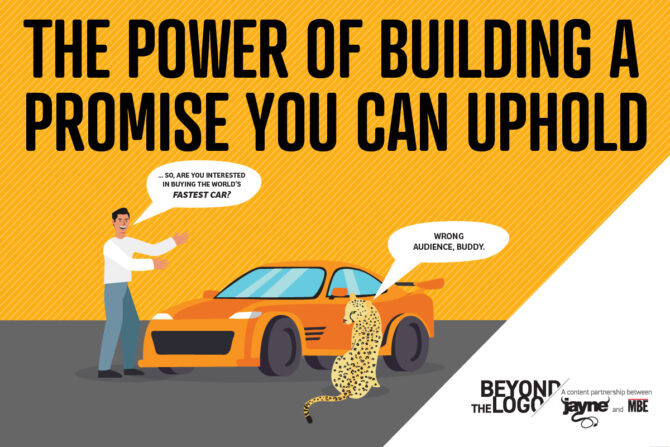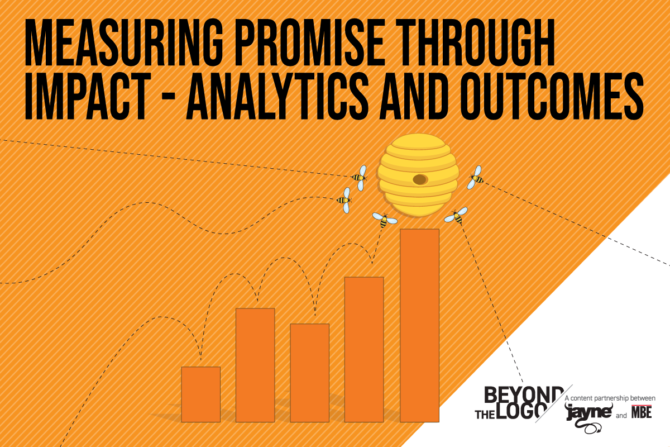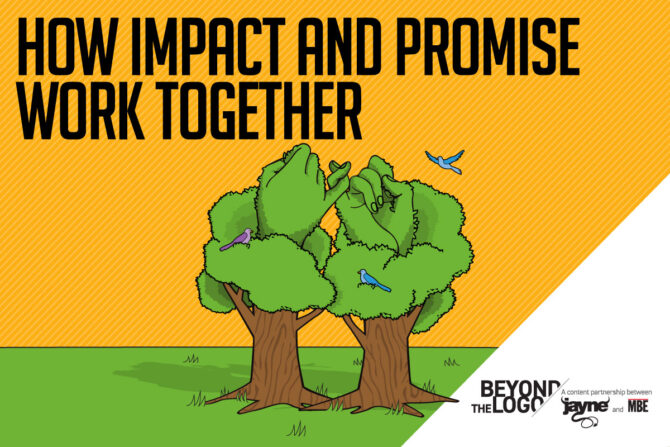The Power of Building a Promise you can Uphold
There are 10 fundamental assets within a brand. Brand Goals, Objectives, Barriers, Strategies, Audience, Position, Promise, Support, Tone and Personality.
The first 9 are technical – objective. The last one – Tone & Personality – is more subjective.
The most important asset for ANY brand is the brand’s promise. Without a brand promise, well, you don’t have dependable revenue. The remaining nine assets help buttress the overall brand platform.
Anyone can promise you anything. But only a promise kept, or delivered upon, is a promise that matters. Comedian Jerry Seinfeld had a joke about this involving restaurant reservations: “You know how to *take* the reservation; you just don’t know how to *hold* the reservation. And that’s really the most important part of the reservation: the holding. Anybody can just take them.” It takes a lot as a business owner to ensure that the promise you make is one that your best customers can consistently depend on. Who you deliver your promise to is another defining moment, for every time your company or brand makes a transaction.
Two specific assets within your brand platform can make your promise vulnerable, while at the same time, guiding it: 1. Position, which protects your promise; (for more on how position protects your promise check out our other article, Positioning, a Brand’s Most Powerful Defense), and 2. Audience, which acts as your brand’s regulator. Rarely do we see people talking about them like this, because things start to get real when you start to understand how a misalignment between audience, and a lack of clarity in position, puts your promise at high risk.
It works like this.
If you invited a bunch of people for dinner, and most of those people were non-dairy, but you made an awesome cheese charcuterie, scalloped potatoes, lobster Mac n cheese and a creamy Alfredo, the night would be considered unpleasant. Maybe even disrespectful. Whether someone was vegan or just had a preference for non dairy meals, either way, they weren’t the right audience for the dinner you served.
Dairy lovers, however, would’ve loved that meal! Understanding who your audience is sets up the ability to regulate who gets invited to consider your positioning. Your positioning protects your promise by further screening those who are looking to engage in your promise.
On the flip side, not understanding how audience, position and promise work together at all can cause catastrophic long term impact. Flip again – understanding this gives any entrepreneur the keys to their kingdom when it comes to ensuring the right clients come into your business at the right time for the right reasons.
So what is audience? And why does your audience matter so much? And how does it relate to your ability to uphold your promise?
Let’s start with “what is the Audience,” and “how do I determine who is MY Audience.”
HOW TO DEFINE YOUR AUDIENCE – Imagine you only have ONE dollar to spend on ONE person. Who are you going to spend it on?
How do you recognize your audience? Look at your P&L. What is consistent across your most favorite clients? Find where revenue meets joy when it comes to how you deliver to your clients.
Why does your audience matter so much? Because if you try to sell someone who is NOT your ideal audience, one of two things is going to happen.
1) They will reject you – and your time and hopes have now been wasted.
2) They will buy from you – and be disappointed – on top of wasting time and hope; you’ve now impacted your reputation and do not have a good referral or case study you can use to further your business. No one wants to talk about that part. Worst of all, you can be accused of lying or even worse, sued. Yep. A wrong audience can perceive your mismatched expectations as dishonesty.
If you sell someone who IS your audience, three things happen:
1) They confirm your promise is authentic because their unmet need was delivered upon.
2) Your value goes up – i.e. you can charge more with more proof that you do what you say you will to the right buyers.
3) You have a case study you can use to help market, sell, elevate or even grow your business.
The wrong audience can perceive you as NOT upholding your promise. Even if you did, the right audience perceives you as NAILING IT. As long as you uphold it.
So how do you know whether or not you can uphold your promise?
- Can you state the value you provide simply?
- Do you have an 11 second elevator pitch that others – not just you – can cite? Clients too?
- Do you have more than 2 clients that would be able to provide a testimonial on what you promise? Would they sound the same?
- Do you see alignment amongst your team around your promise? What does it sound like? Can everyone repeat your promise?
Upholding your promise is something you can prove. It has evidence, data you can cite, point to, showcase, and even elevate.
What does it look like when you are not upholding your promise?
- A lot of returns and/or reneging
- Wasted time trying to solve things / fix things
- Loss of proposal after proposal
- Hard to get others to create testimonials for you – and when they do, the testimonials don’t sound alike or authentic because they don’t reflect a singular promise
These principals are resident in personal and professional brands. We caught up with Michael Baldini, of Rangam to talk about how his personal brand and the brands he represents all intertwine, how knowing his audience is his super power as a Power Promise Keeper. Here’s a soundbite from Michael on how he regulates his personal and professional brand. Check him out on the Diversity Discourse podcast for more insights!
Beyond The Logo: When did you become aware of how your personal brand was at play and how did understanding your audience matter?
Michael Baldini: Roundtables at national conferences. I always represent an employer and nine out of ten times I was pitching as an employee vs. the owner of the company at a roundtable. It was at that time I understood it was my own brand that needed to stand out from the 11 others, for the entire six rounds. These organizations don’t want to work with an employee, they want to work with the owners.
So I realized I needed to create my own brand. How I presented myself, how I asked to follow up, what I ensured about my clients promise. Even my long hair makes me stand out.
My true brand is about the relationship piece. At the end of the day, I want your business. Countless dinners, golf (I’m terrible at golf, but I still go), it’s about being present. Business owners do it all the time, because they are passionate about their team.
As an employee, I have to do that too – I am entrepreneurial. Everyone is selling. Whether you go to the grocery store, or are hunting for a better price at car maintenance, there’s always some kind of sale being done. Whether its’ being a supplier diversity champion, or being involved in DEI, I want to figure out how to carve out a place where we can perform to our best strength.
~
Upholding your promise stands above all for the success of your personal and professional brand. With two key assets – position and audience, as regulatory assets. When you understand your audience and align it with your position, your brand attracts the right clients. To make that a reality, you need clear articulation, team alignment, and tangible evidence. Be sure to prioritize these critical factors of a brand, and you’ll be on the right path for achieving sustainable outcomes.
The fun doesn’t stop here – Beyond the Logo is continuing the conversation on the Diversity Discourse podcast with MBE Magazine on Spotify! Join us as we sit down with business leaders across the diverse supply space and talk about the power of promise keepers.
Looking to clarify your position, promise, and / or audience? Feel free to reach out to us at Clarity@JayneAgency.com and we’d be happy to help you get started.
We love feedback. Tell us what you liked, want more of by taking our survey here:
Use the QR Code below or go to: https://www.surveymonkey.com/r/Clarity2022



